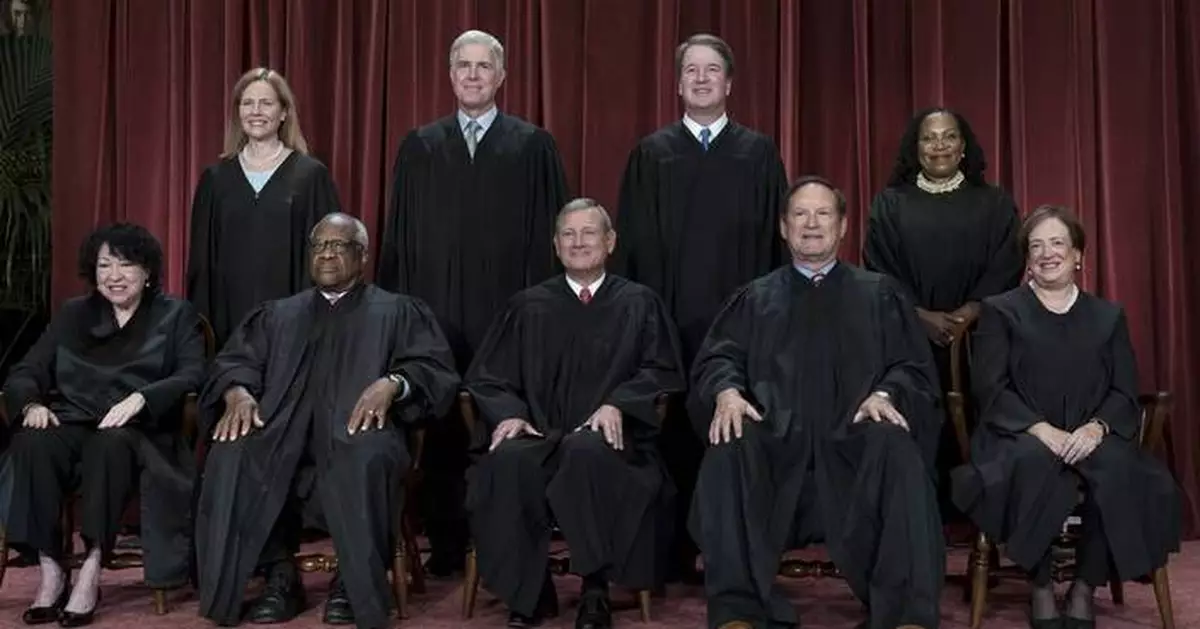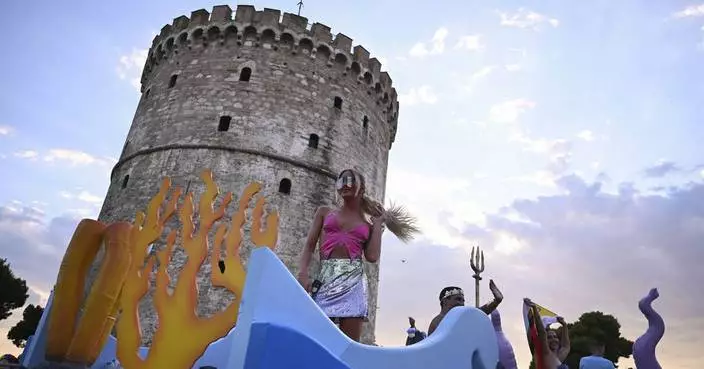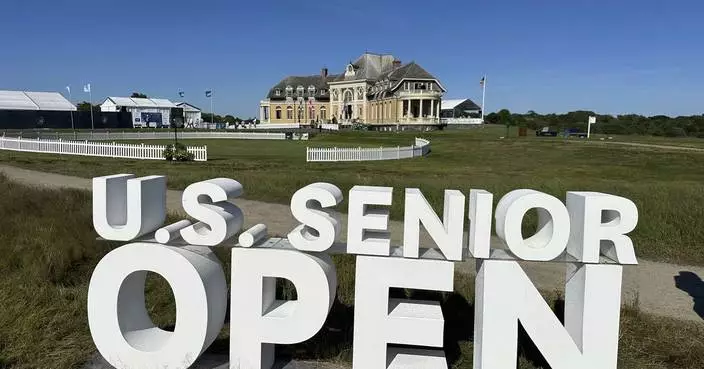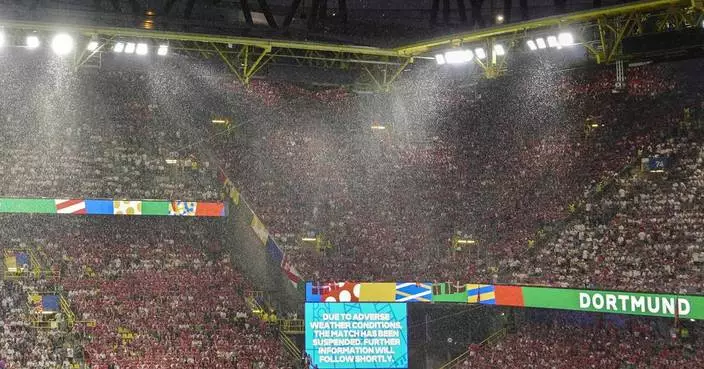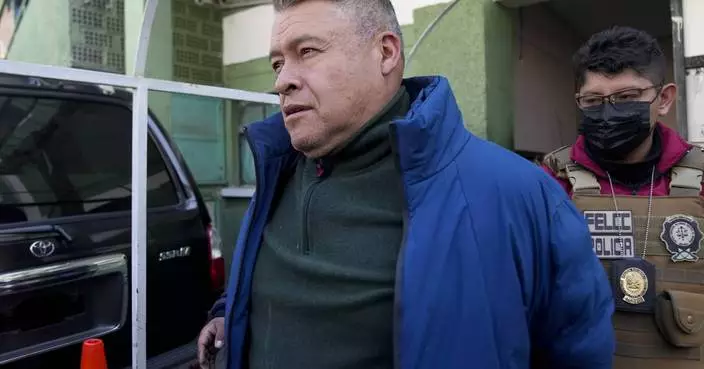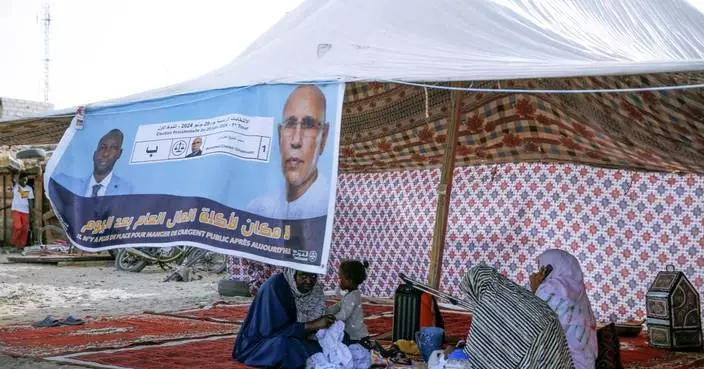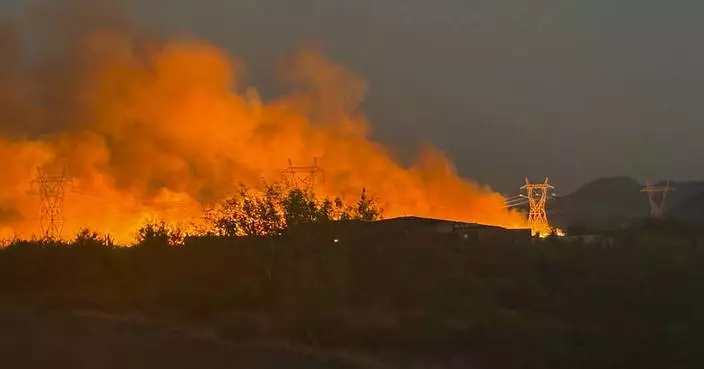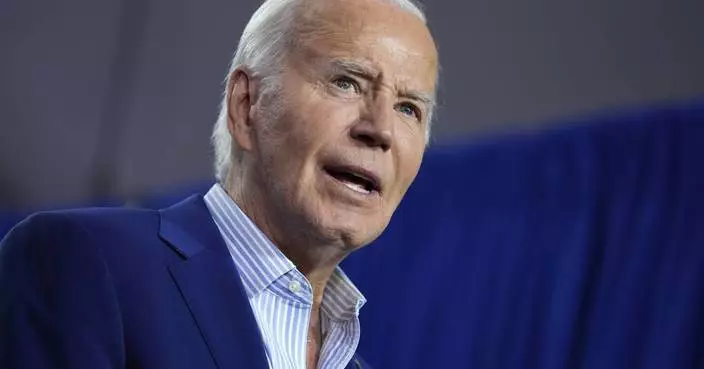WASHINGTON (AP) — A solid majority of Americans say Supreme Court justices are more likely to be guided by their own ideology rather than serving as neutral arbiters of government authority, a new poll finds, as the high court is poised to rule on major cases involving former President Donald Trump and other divisive issues.
The survey from The Associated Press-NORC Center for Public Affairs Research found that 7 in 10 Americans think the high court's justices are more influenced by ideology, while only about 3 in 10 U.S. adults think the justices are more likely to provide an independent check on other branches of government by being fair and impartial.
The poll reflects the continued erosion of confidence in the Supreme Court, which enjoyed broader trust as recently as a decade ago. It underscores the challenge faced by the nine justices — six appointed by Republican presidents and three by Democrats — of being seen as something other than just another element of Washington’s hyper-partisanship.
The justices are expected to decide soon whether Trump is immune from criminal charges over his efforts to overturn his 2020 reelection defeat, but the poll suggests that many Americans are already uneasy about the justices' ability to rule impartially.
"It's very political. There's no question about that," said Jeff Weddell, a 67-year-old automotive technology sales representative from Macomb County, in presidential swing-state Michigan.
“The court's decision-making is so polluted," said Weddell, a political independent who plans to vote for Trump in November. “No matter what they say on President Trump's immunity, this will be politically motivated."
Confidence in the Supreme Court remains low. The poll of 1,088 adults found that 4 in 10 U.S. adults say they have hardly any confidence in the people running the Supreme Court, in line with an AP-NORC poll from October. As recently as early 2022, before the high-profile ruling that overturned the constitutional right to abortion, an AP-NORC poll found that only around one-quarter of Americans lacked confidence in the justices.
And although the Supreme Court’s conservative majority has handed down some historic victories for Republican policy priorities over the past few years, rank-and-file Republicans aren’t giving the justices a ringing endorsement.
It's been two years since the court's ruling on abortion rights. Justices Neil Gorsuch, Brett Kavanaugh and Amy Coney Barrett — Trump nominees confirmed by a Republican Senate — were part of the majority that overturned the near-50-year abortion-rights precedent established in Roe v. Wade.
This year’s term, with a dozen cases still undecided, has already seen some major rulings. Earlier in June, the Supreme Court unanimously preserved access to the pharmaceutical drug mifepristone, a medication used in nearly two-thirds of all abortions in the U.S. last year. The same week, the court struck down a Trump-era gun restriction, a ban on rapid-fire gun accessories known as bump stocks, a win for gun-rights advocates.
Only about half of Republicans have a great deal or a moderate amount of confidence in the court’s handling of important issues, including gun policy, abortion, elections and voting, and presidential power and immunity, according to the new poll.
“I don’t have a lot of faith in the Supreme Court. And that’s unfortunate because that’s the final say-so, the final check and balance on our three-branch government,” said Matt Rogers, a 37-year-old Republican from Knoxville, Tennessee.
Other Republicans share that mistrust, although the court's current makeup is more conservative than any court in modern history. They are also split on whether the justices are more driven by personal ideology or impartiality, with about half of Republicans saying the justices are more likely to shape the law to fit their own ideology, and another half saying they are likelier to be an independent check on their co-equal branches.
“I think they are getting influenced and pressured by a lot of people and a lot of entities on the left,” said Rogers, a health and wellness trainer who plans to vote for Trump a third time this year. “Let's be honest. It's anything to crucify Trump."
Some Republicans have less confidence in the court’s handling of specific issues than others. The poll found, for instance, that about 6 in 10 Republican women have little to no confidence in the court’s handling of presidential power and immunity, compared to 45% of Republican men.
Janette Majors, a Republican from Ridgefield, Washington, says it’s only natural for a justice to reflect the ideology of the president who nominated them.
But episodes outside the Supreme Court chambers have made her less confident in the people running the court.
“What you hear about Clarence Thomas, taking trips paid for by rich people, makes me think there are some individuals there that don’t sound like I should trust them,” Majors said, referring unprompted to reports that Thomas has for years received undisclosed expensive gifts, including travel, from GOP megadonor Harlan Crow.
Democrats and independents are even more skeptical of the court's neutrality, according to the poll.
About 8 in 10 Democrats — and about 7 in 10 independents — say the justices are more likely to shape the law to fit their own ideology. A similar share has little or no confidence at all in the court's handling of abortion, gun policy and presidential power and immunity.
Michigan Democrat Andie Near noticed that the court seemed to become a political tool in 2016, when then-Senate Majority Leader Mitch McConnell refused to allow hearings on Democratic President Barack Obama's Supreme Court nominee Merrick Garland.
McConnell quickly allowed hearings after Trump nominated Gorsuch within 10 days of taking office in 2017.
“I had thought the court, though maybe skewing left or right, was serving the whole body of the country," the 42-year-old museum registrar from Holland, Michigan, said. “That's when it brought to high relief that the Supreme Court is being used to skew the political environment we live in, and it's only gotten worse.”
The poll of 1,088 adults was conducted June 20-24, 2024, using a sample drawn from NORC’s probability-based AmeriSpeak Panel, which is designed to be representative of the U.S. population. The margin of sampling error for all respondents is plus or minus 4.0 percentage points.
Beaumont reported from Des Moines, Iowa.
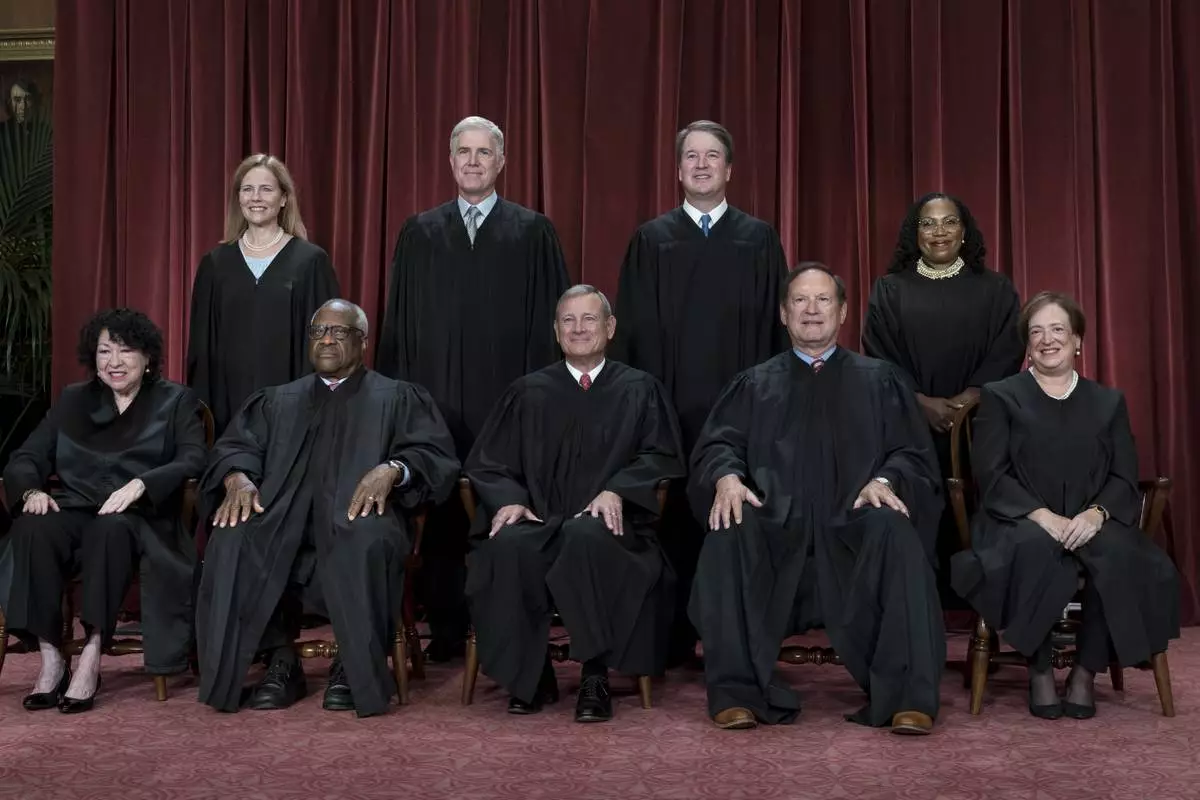
FILE - Members of the Supreme Court sit for a group portrait at the Supreme Court building in Washington, Oct. 7, 2022. Bottom row, from left, Justice Sonia Sotomayor, Justice Clarence Thomas, Chief Justice of the United States John Roberts, Justice Samuel Alito, and Justice Elena Kagan. Top row, from left, Justice Amy Coney Barrett, Justice Neil Gorsuch, Justice Brett Kavanaugh, and Justice Ketanji Brown Jackson. As the U.S. Supreme Court is expected to rule on a major case involving former President Donald Trump, 7 in 10 Americans think its justices are more likely to shape the law to fit their own ideology, rather than serving as neutral arbiters of government authority, according to a new poll. (AP Photo/J. Scott Applewhite)
JERUSALEM (AP) — Humanitarian workers have started moving tons of aid that piled up at a U.S.-built pier off the Gaza coast to warehouses in the besieged Palestinian territory, the United Nations said Saturday, an important step as Washington considers whether to resume pier operations after yet another pause because of heavy seas.
It wasn't known when the aid might reach Palestinians in Gaza, where experts have warned of the high risk of famine as the Israel-Hamas war is in its ninth month. This is the first time trucks have moved aid from the pier since the World Food Program, a U.N. agency, suspended operations there because of security concerns on June 9.
In just the last week, more than 10 million pounds were moved ashore, according to the U.S. military.
WFP spokesperson Abeer Etefa told The Associated Press this is a one-time operation until the beach is cleared of the aid and is being done to avoid spoilage. Further U.N. operations at the pier depend on security assessments, Etefa said. The U.N. is investigating whether the pier was used in an Israeli military operation last month to rescue three hostages in a raid that killed more than 270 Palestinians.
If WFP trucks successfully bring the aid to warehouses inside Gaza, that could affect the U.S. military’s decision on whether to reinstall the pier, which was removed because of adverse weather on Friday. U.S. officials said they were considering not reinstalling it because of the possibility that the aid would not be picked up.
Lawlessness around humanitarian convoys is another challenge to aid distribution. The convoys have come under attack in Gaza. While most aid deliveries come by land, restrictions around border crossings and on what items can enter Gaza have further hurt a population that was already dependent on humanitarian aid before the war.
Meanwhile Saturday, a senior Biden administration official said the U.S. has presented new language to intermediaries Egypt and Qatar aimed at trying to jump-start stalled Israel-Hamas negotiations.
The official, who requested anonymity to discuss the effort that the White House has yet to publicly unveil, said the revised text focuses on negotiations that are to start between Israel and Hamas during the first phase of a three-phase deal that U.S. President Joe Biden laid out nearly a month ago.
The first phase calls for a “full and complete cease-fire,” a withdrawal of Israeli forces from all densely populated areas of Gaza and the release of a number of hostages, including women, older people and the wounded, in exchange for the release of hundreds of Palestinian prisoners.
The proposal called for the parties to negotiate the terms of the second phase during the 42 days of phase one. Under the current proposal, Hamas could release all of the remaining men, both civilians and soldiers. In return, Israel could free an agreed-upon number of Palestinian prisoners and detainees. The releases won’t occur until “sustainable calm” takes effect and all Israeli troops withdraw from Gaza.
The new proposed language, which the official didn't detail, aims to find a workaround of differences between Israel and Hamas about the parameters of the negotiations between phase one and phase two. Hamas wants negotiations centered on the number and identity of Palestinian prisoners to be released from Israeli jails in exchange for remaining living Israeli soldiers and male hostages held in Gaza, the official said. Israel wants negotiations to be broader and include the demilitarization of the territory controlled by Hamas.
Hamas political official Osama Hamdan said the group had yet to receive a new cease-fire proposal from mediators. Hamas political leader Ismail Haniyeh spoke by phone with the head of Egypt’s general intelligence service to discuss the negotiations, Hamas said in a statement.
More than 37,800 Palestinians have been killed in the war since it began with Hamas’ attack on southern Israel on Oct. 7, according to Gaza’s Health Ministry, which doesn’t distinguish between civilians and combatants in its toll. The ministry said the bodies of 40 people killed by Israeli strikes had been brought to local hospitals over the past 24 hours.
At least three people, including a 5-year-old girl, were killed and six others were wounded in a strike in the Bureij refugee camp in central Gaza. The Israeli military didn't immediately comment.
The Oct. 7 Hamas attack in Israel killed about 1,200 people, mostly civilians, and another 250 people were taken hostage.
Israeli forces have been battling Palestinian militants in an eastern part of Gaza City, Shijaiyah, over the last week. Israel's military on Saturday noted “close-quarters combat.” Tens of thousands of Palestinians have fled their homes, according to the U.N.
“It’s like the first weeks of the invasion,” one resident, Mahmoud al-Masry said of the intensity of the fighting. “Many people were killed. Many houses were destroyed. They strike anything moving.”
Elsewhere, thousands of Palestinians who remained in Gaza’s southernmost city of Rafah fled Friday for Muwasi, a coastal tent camp designated by the Israeli army as a safe zone. Some told the AP that they evacuated because Israeli gunfire and missiles had come close to where they sheltered.
More than 1.3 million Palestinians have fled Rafah since Israel’s incursion into the city in early May, while aid groups warn there are no safe places to go.
With the heat in Gaza reaching over 32 C (89 F), many displaced people have found tents unbearable. The territory has been without electricity since Israel cut off power as part of the war, and Israel also stopped pumping drinking water to the enclave.
“Death is better than it. It is a grave,” said Barawi Bakroun, who was displaced from Gaza City, as others fanned themselves with pieces of cardboard.
Wafaa Shurafa reported from Deir al-Balah, Gaza Strip. Aamer Madhani in Asheville, North Carolina, Samy Magdy in Cairo, and Abby Sewell in Beirut, contributed to this report.
Follow AP’s Israel-Hamas war coverage at https://apnews.com/hub/israel-hamas-war
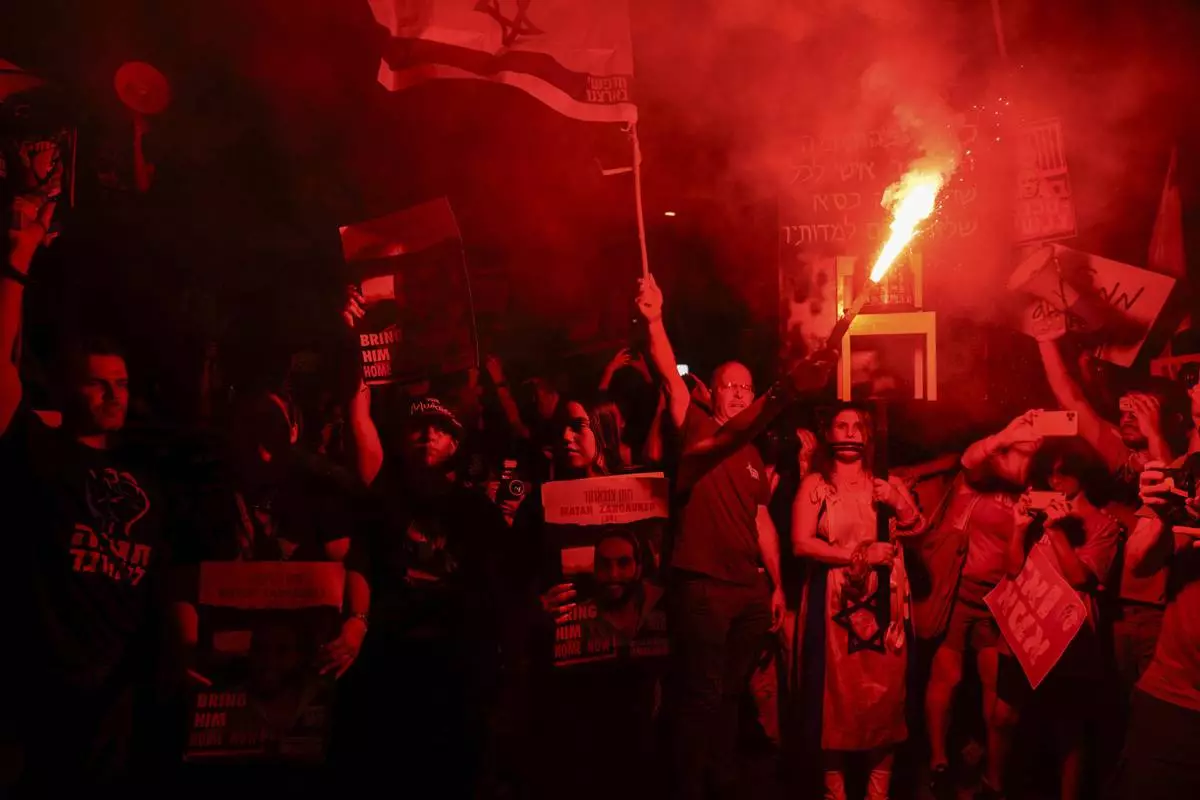
People protest against Israeli Prime Minister Benjamin Netanyahu's government and call for the release of hostages held in the Gaza Strip by the Hamas militant group, in Tel Aviv, Israel, Saturday, June 29, 2024. (AP Photo/Ohad Zwigenberg)
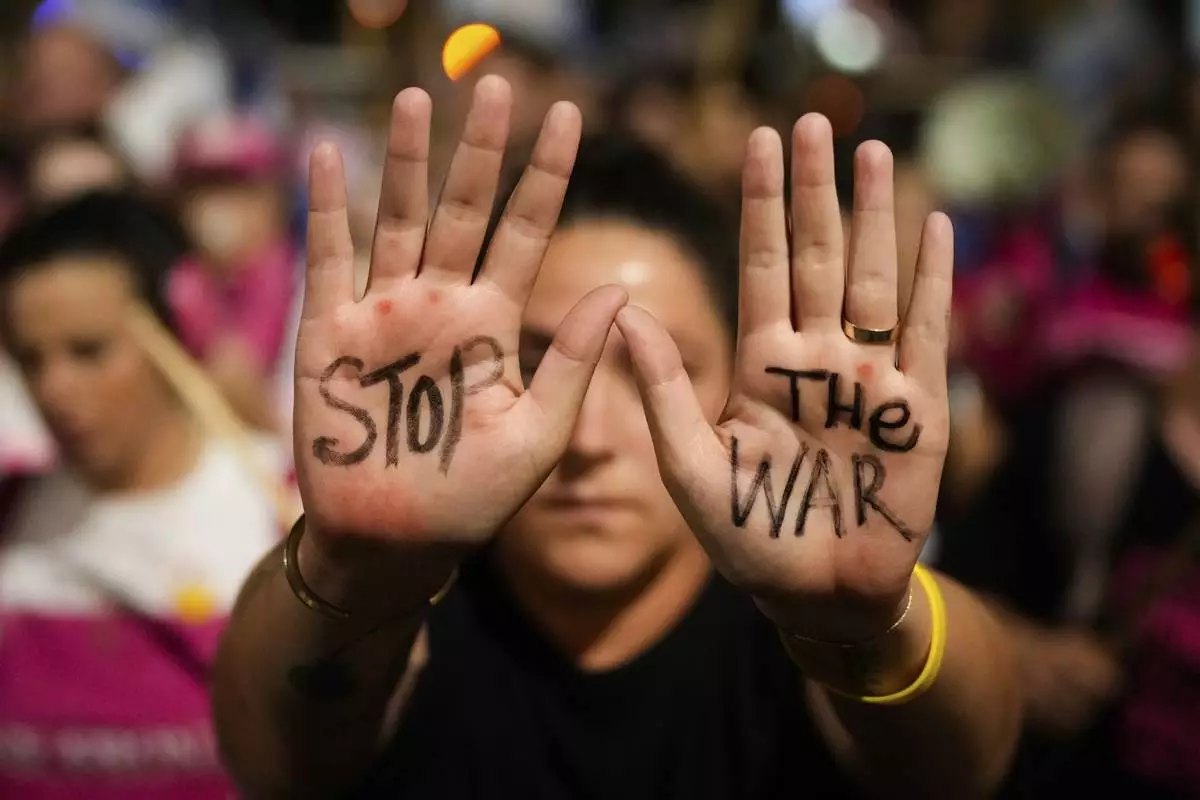
People protest against Israeli Prime Minister Benjamin Netanyahu's government and call for the release of hostages held in the Gaza Strip by the Hamas militant group, in Tel Aviv, Israel, Saturday, June 29, 2024. (AP Photo/Ohad Zwigenberg)
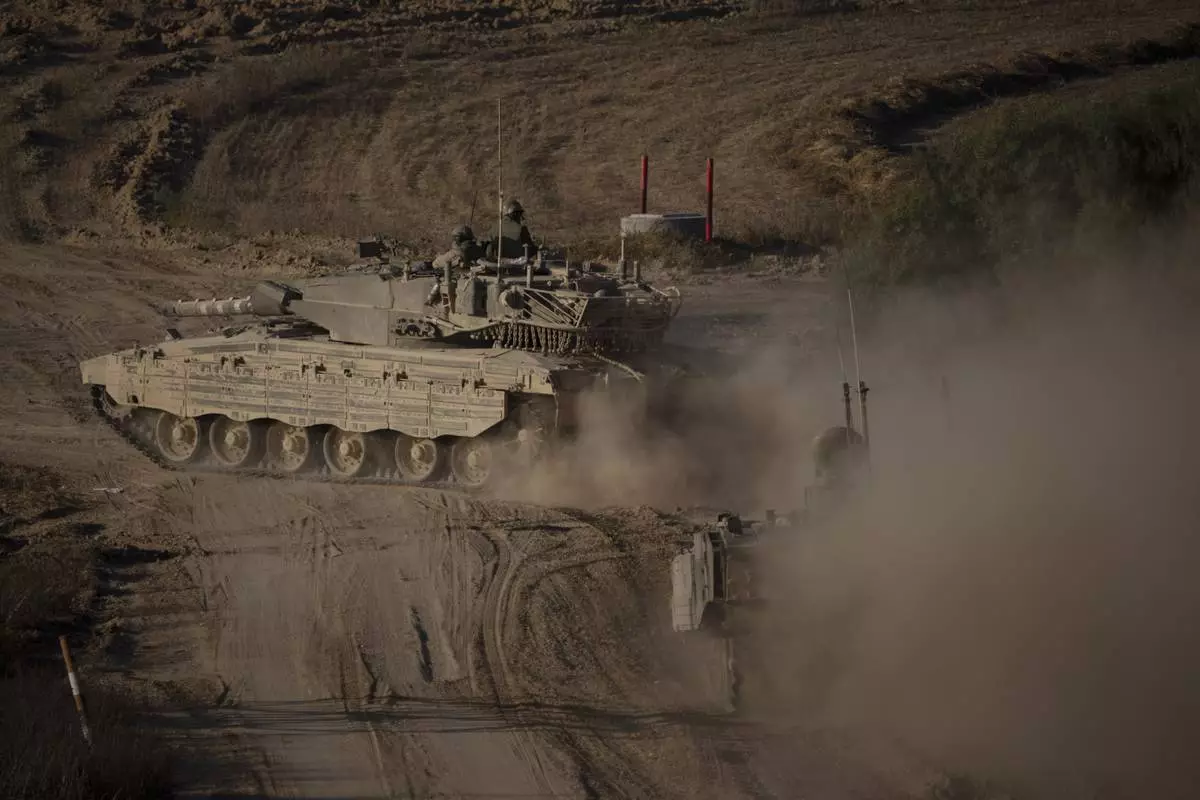
Israeli soldiers move on the top of a tank near the Israeli-Gaza border, as seen from southern Israel, Saturday, June 29, 2024. (AP Photo/Leo Correa)
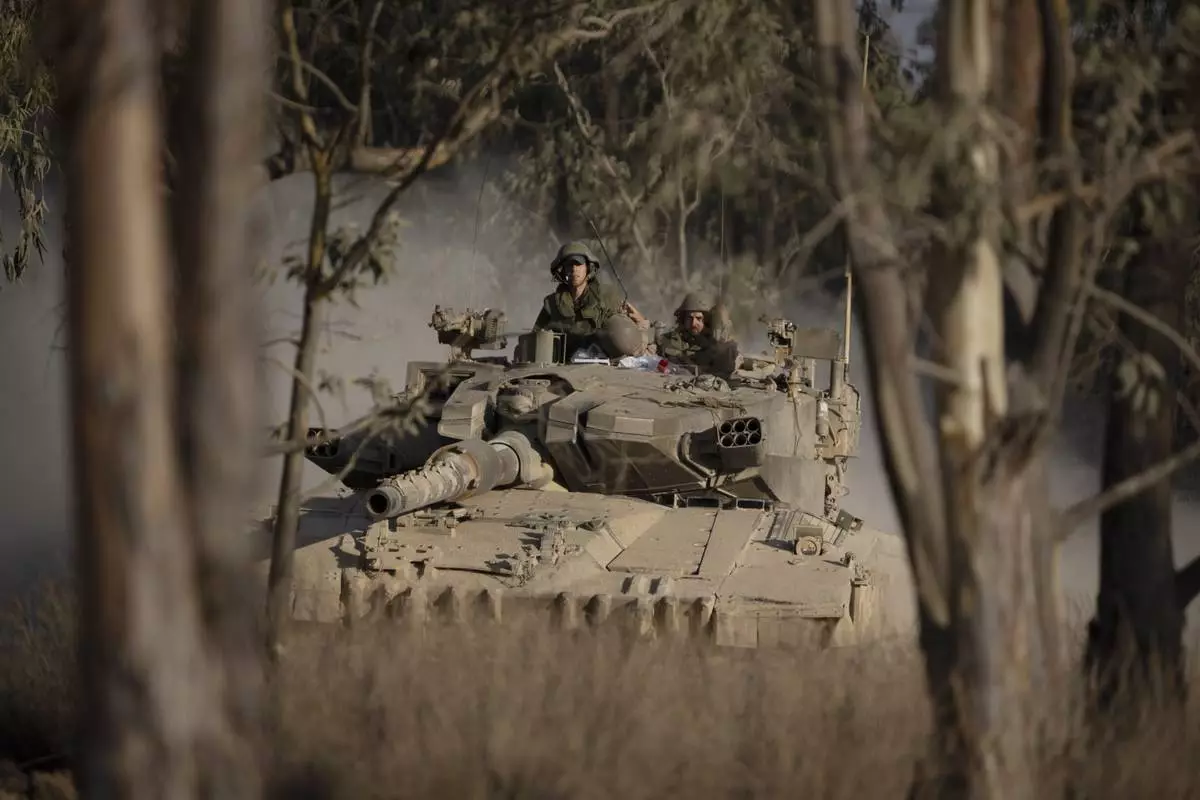
Israeli soldiers move on the top of a tank near the Israeli-Gaza border, as seen from southern Israel, Saturday, June 29, 2024. (AP Photo/Leo Correa)
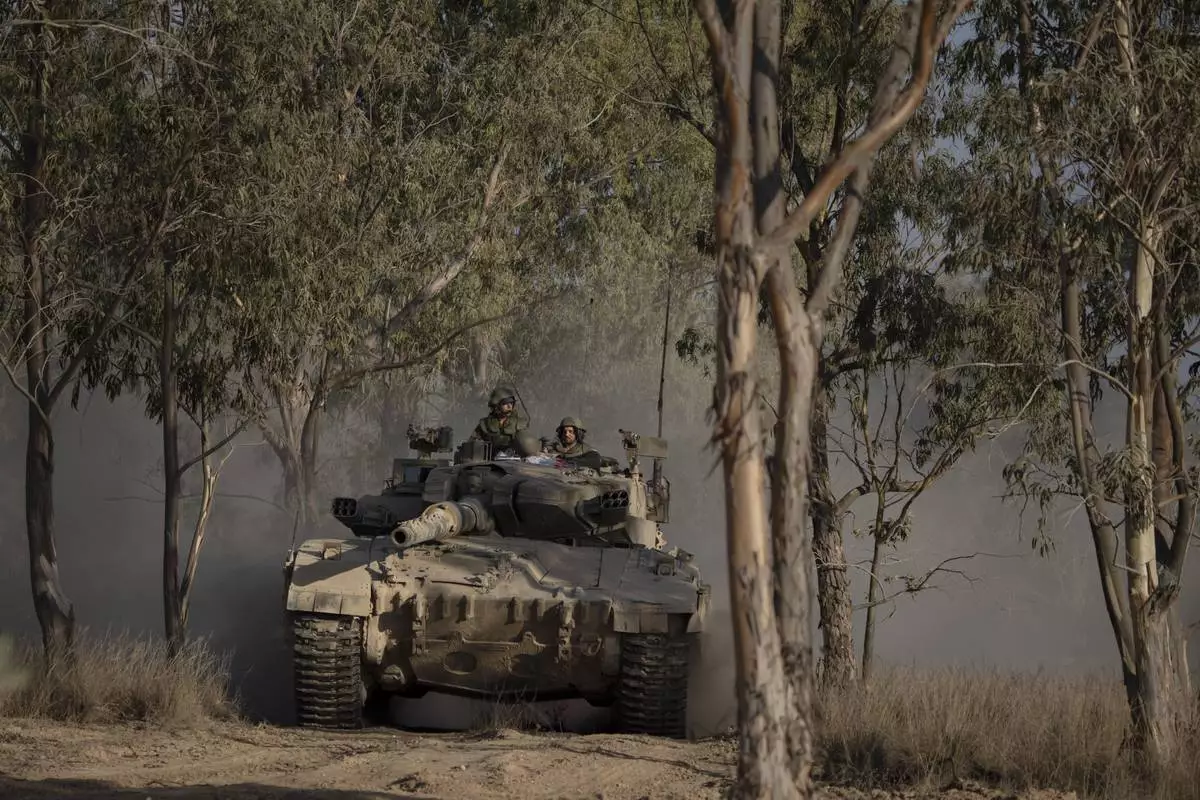
Israeli soldiers move on the top of a tank near the Israeli-Gaza border, as seen from southern Israel, Saturday, June 29, 2024. (AP Photo/Leo Correa)

Israeli soldiers move on the top of a tank near the Israeli-Gaza border, as seen from southern Israel, Saturday, June 29, 2024. (AP Photo/Leo Correa)
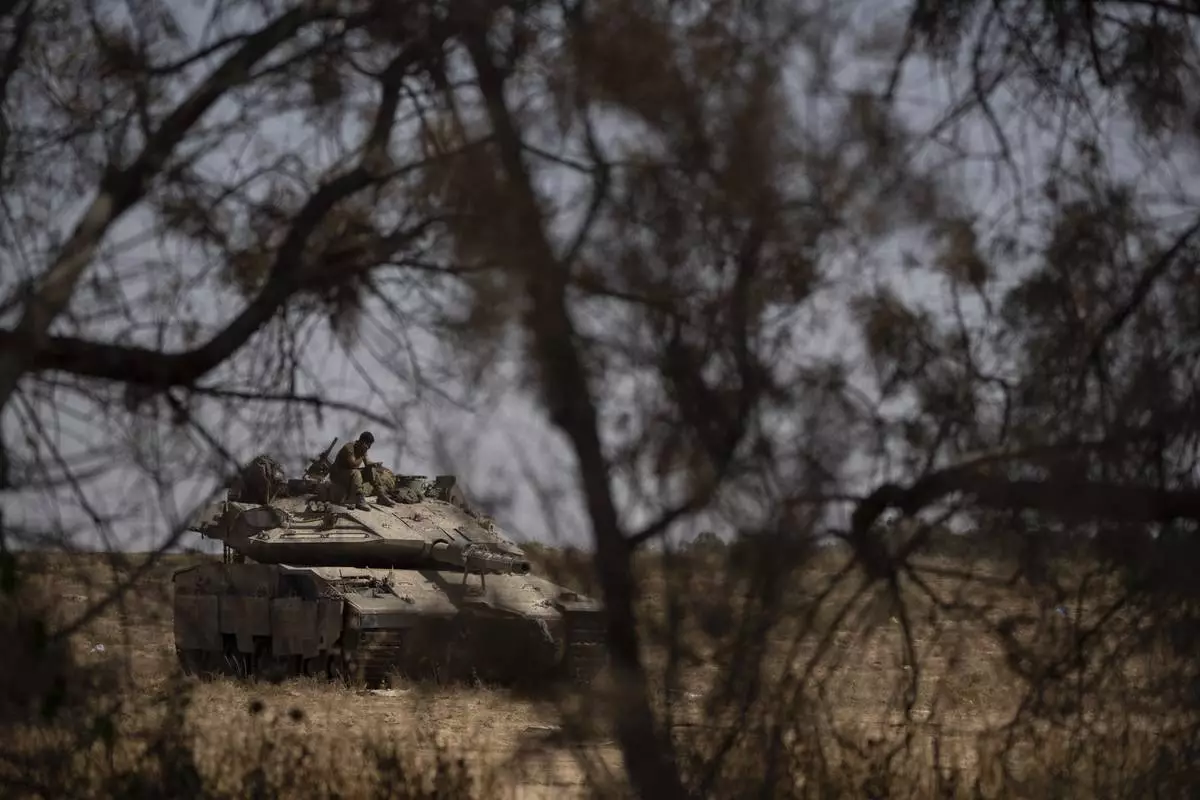
An Israeli soldier sits on the top of a tank near the Israeli-Gaza border, as seen from southern Israel, Saturday, June 29, 2024. (AP Photo/Leo Correa)
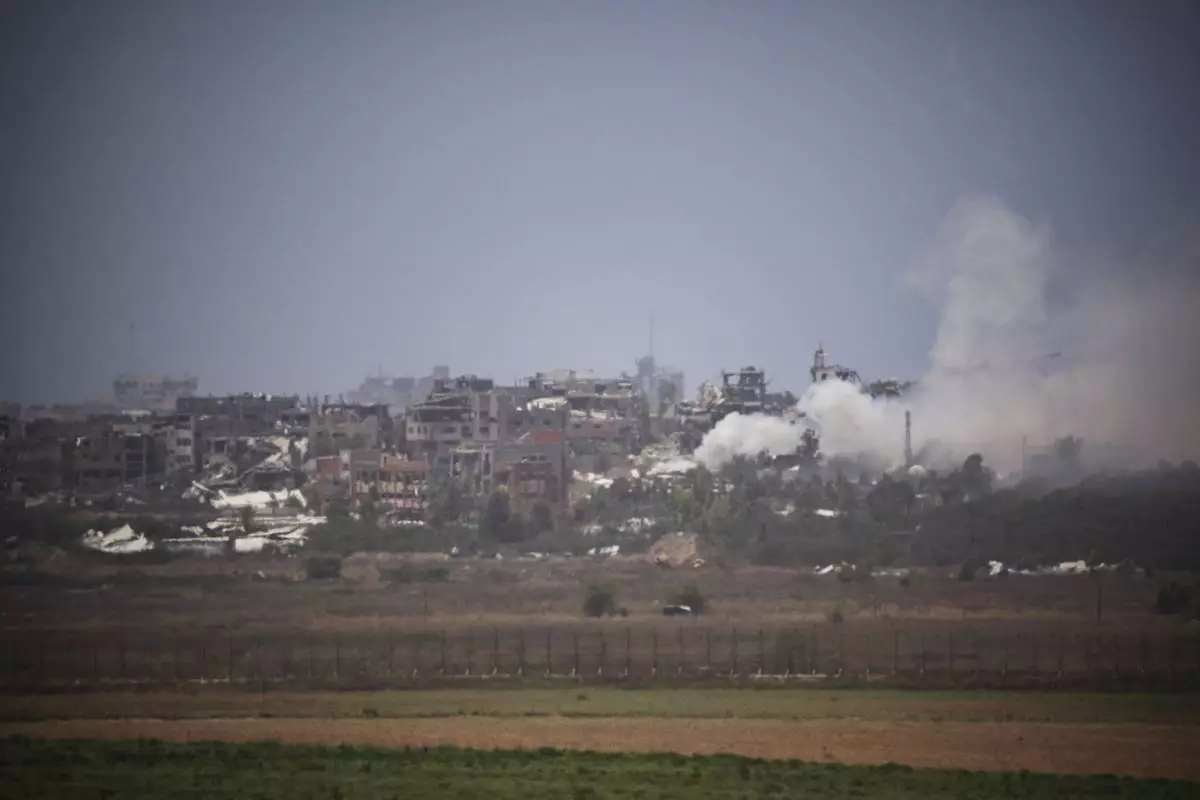
Smoke rises in the Gaza Strip as seen from southern Israel, Saturday, June 29, 2024. (AP Photo/Leo Correa)
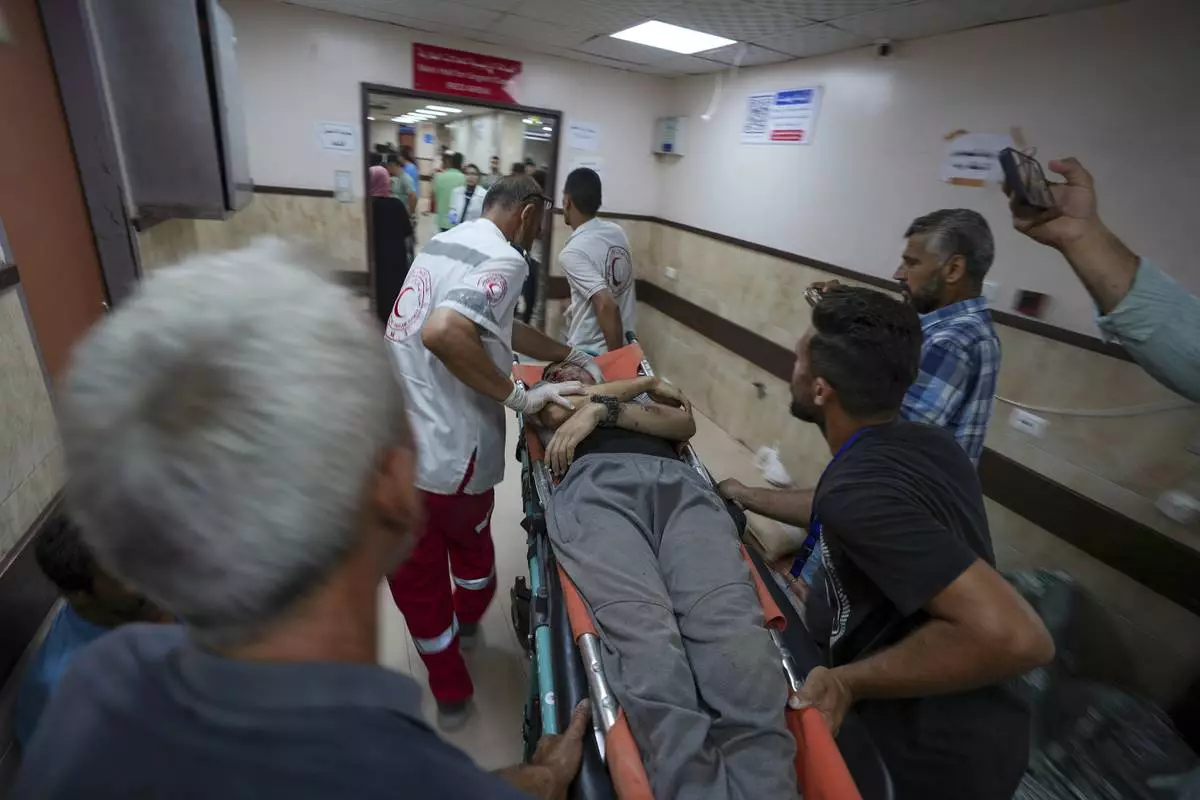
A Palestinian wounded in an Israeli bombardment of Nuseirat refugee camp, is brought to al-Aqsa Martyrs Hospital in Deir al Balah, central Gaza Strip, Saturday, June 29, 2024. (AP Photo/Abdel Kareem Hana)
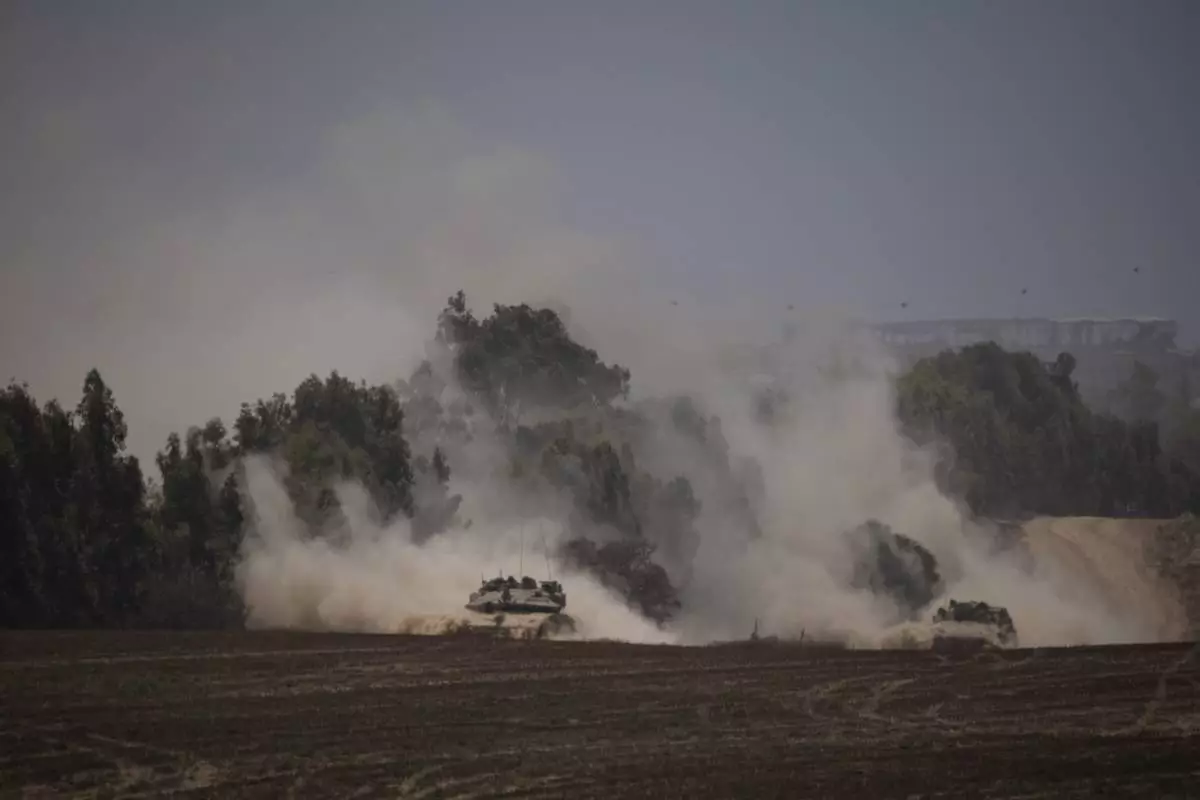
Israeli armoured vehicles move near the Israeli-Gaza border, as seen from southern Israel, Saturday, June 29, 2024. (AP Photo/Leo Correa)
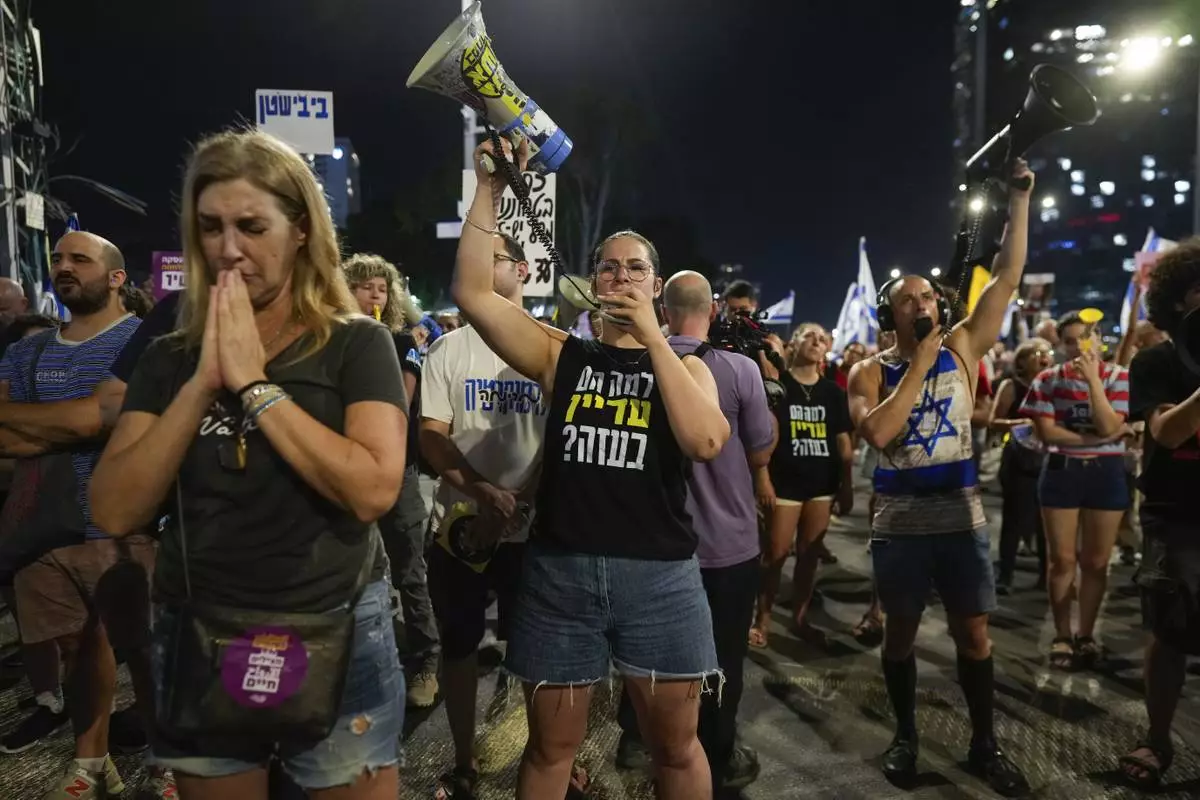
People protest against Israeli Prime Minister Benjamin Netanyahu's government and call for the release of hostages held in the Gaza Strip by the Hamas militant group, in Tel Aviv, Israel, Saturday, June 29, 2024. (AP Photo/Ohad Zwigenberg)
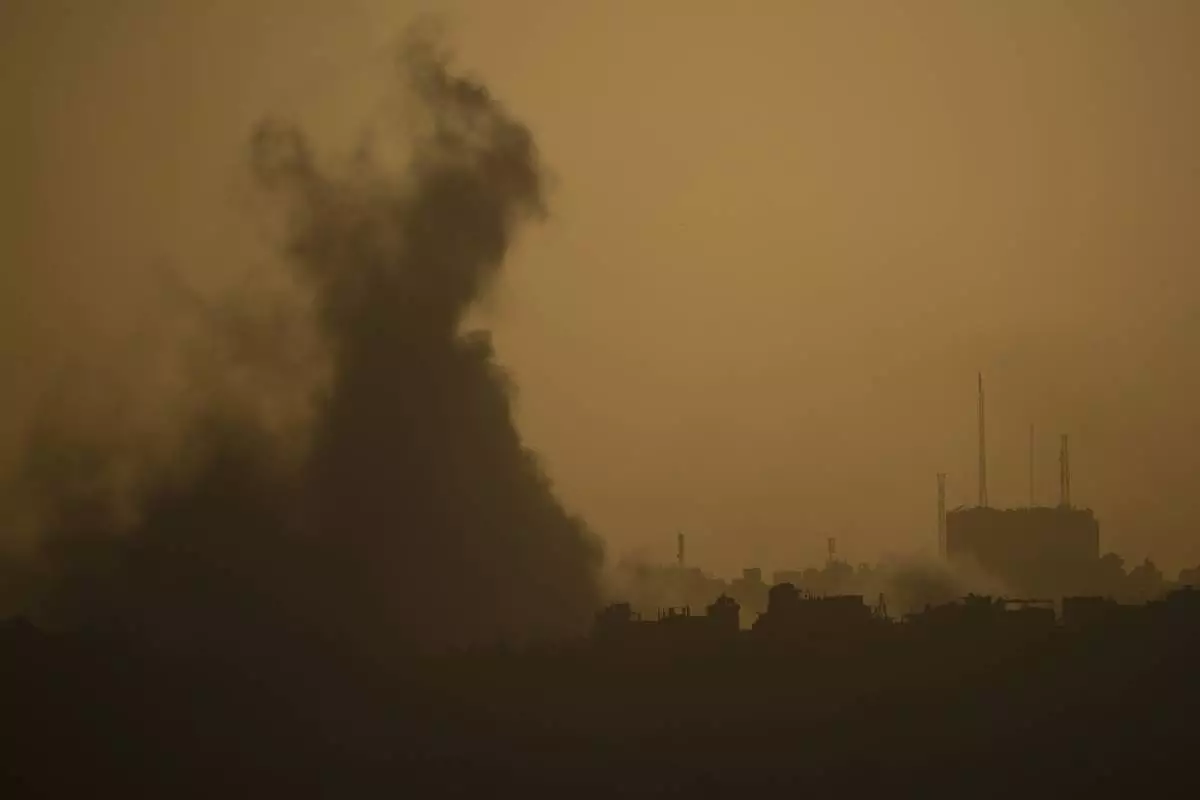
Smoke rises after an explosion in the Gaza Strip as seen from southern Israel, Saturday, June 29, 2024. (AP Photo/Leo Correa)
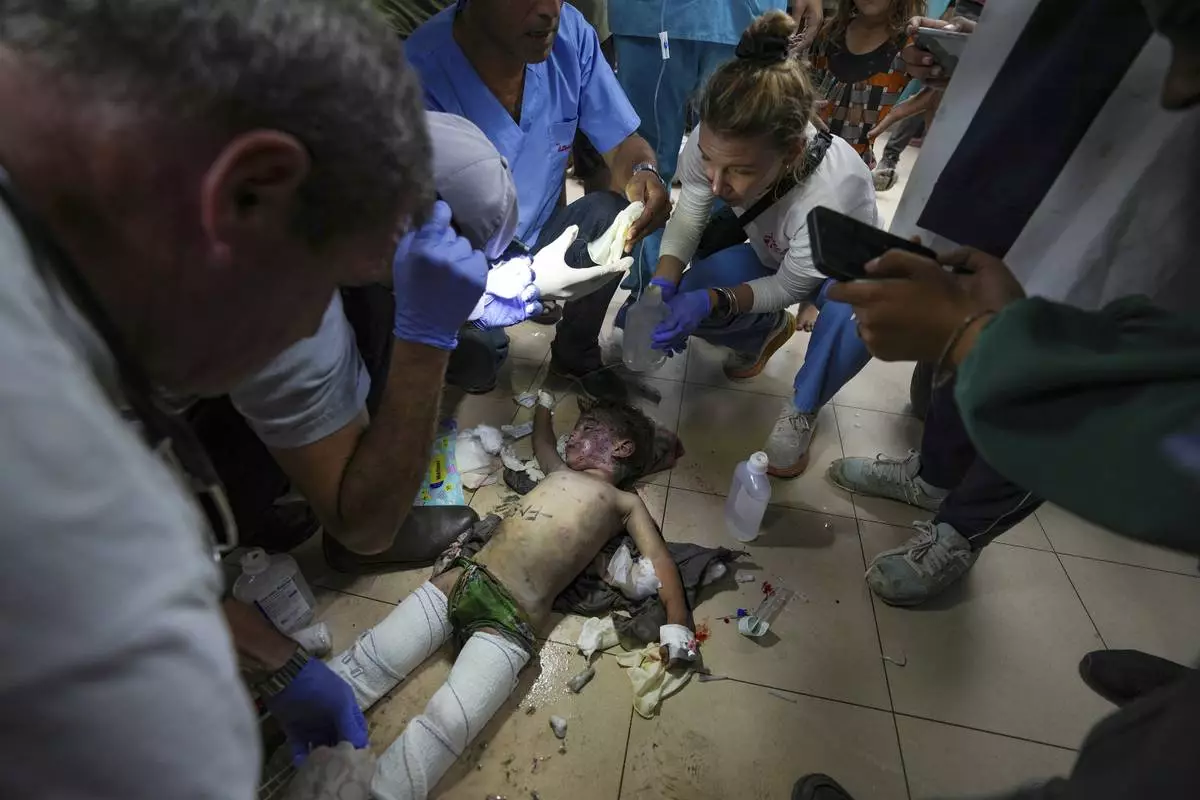
Medics treat a wounded child from an Israeli bombardment of Nuseirat refugee camp, at al-Aqsa Martyrs Hospital in Deir al Balah, central Gaza Strip, Saturday, June 29, 2024. (AP Photo/Abdel Kareem Hana)
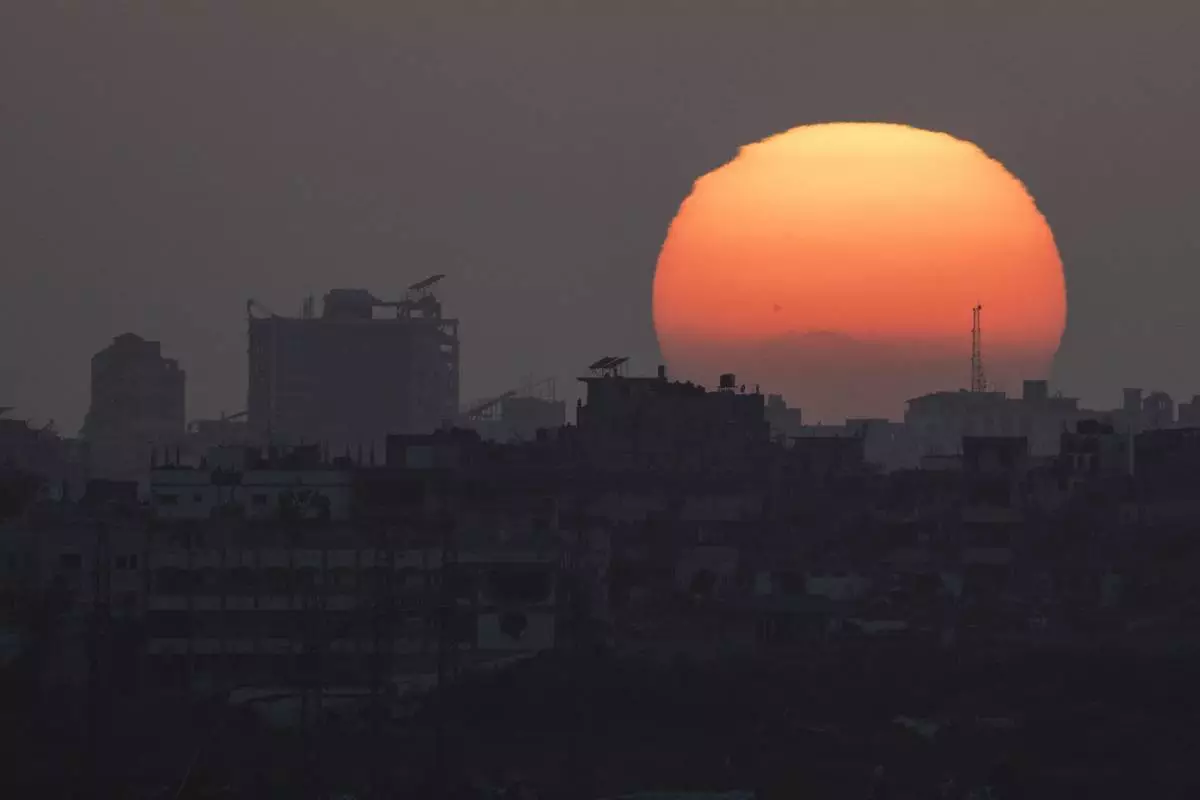
The sun sets behind the buildings in the Gaza Strip as seen from southern Israel, Saturday, June 29, 2024. (AP Photo/Leo Correa)



